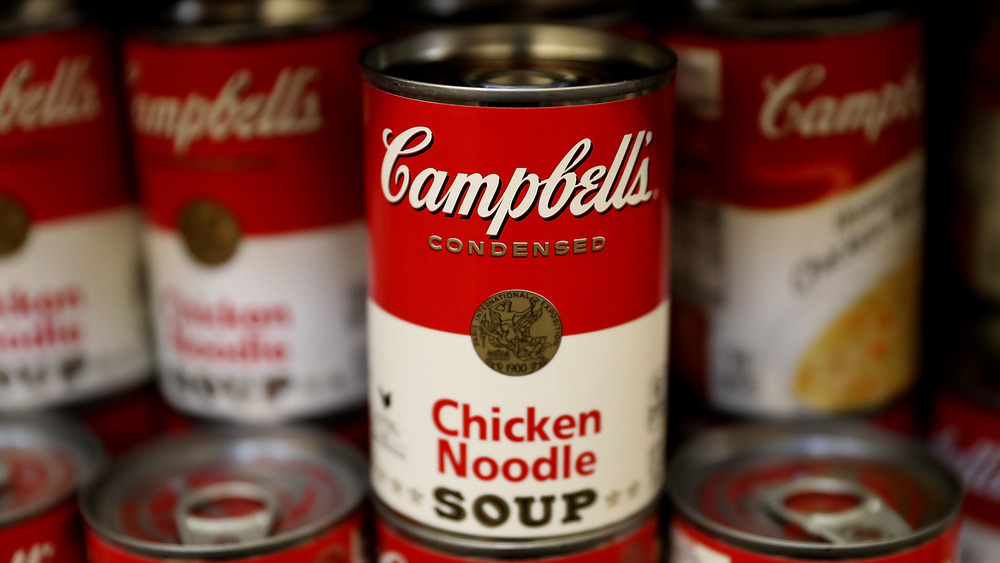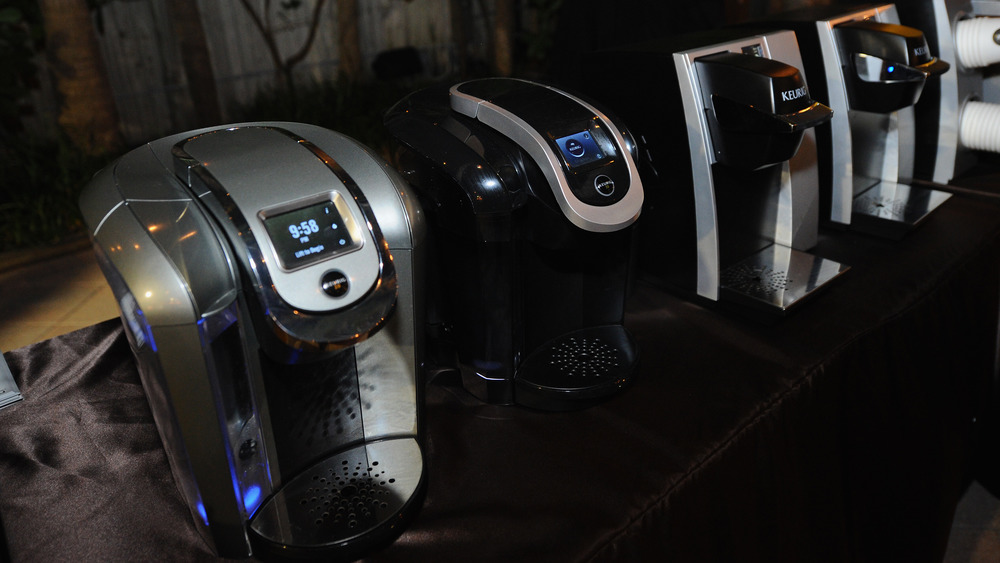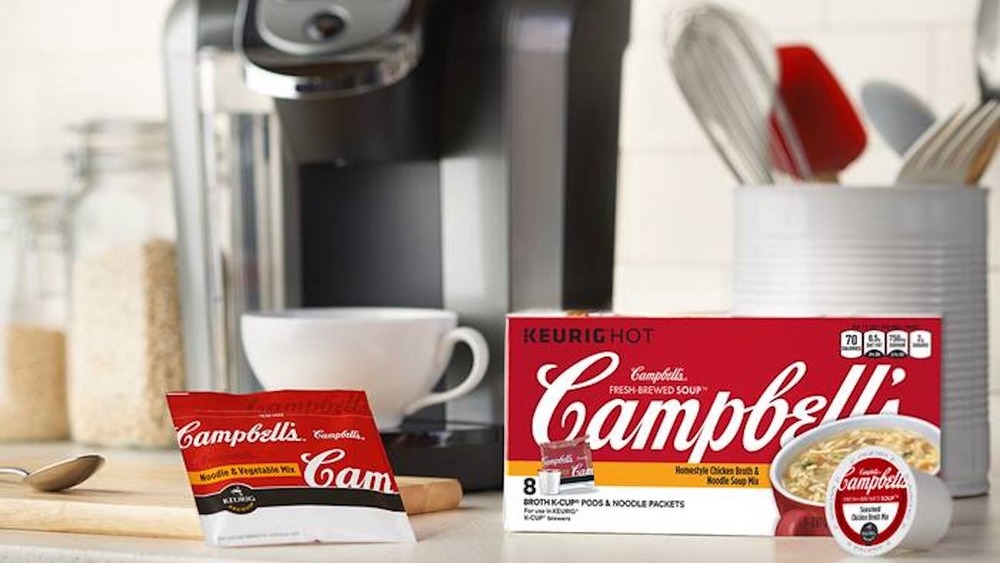A Look At Campbell's Failed Keurig Efforts
We may receive a commission on purchases made from links.
Picture this: You're stuck in the office, without a thing to eat for lunch because a coworker (again) snagged your sandwich. You shuffle through the community kitchen cabinet — you know the one, filled with ancient cans and pantry staples that have been there longer than most employees — and come across a piece of American history: a Campbell's soup in K-Cup form.
Yes, we're being serious. Back in 2014, Keurig and Campbell's teamed up to offer shoppers a new way to eat their classic chicken noodle, reported Bustle. Enter Campbell's K-Cup pods, which could be brewed through any Keurig. If you've ever wanted to eat your soup like it's astronaut food, then you were in luck, because the brands decided the general public needed to whip up their next lunch from a dried packet of noodle mix and a pod of broth concentrate.
But despite some early-on buzz from intrigued customers, the two-step soup was doomed thanks to lackluster sales on both Campbell's and Keurig's ends. Bustle's original coverage of the unique food said it best from the start: "This really feels like something that'll succeed or fail on the strength of first impressions." And fail, it did.
Campbell's announced that the great K-Cup Soup Experiment would be discontinued in 2016. According to a spokeswoman from the company, the decision was made due to a combination of poor performance and a need to focus on the brand's "core soup portfolio" (via Food Dive).
For customers, the cons of Campbell's K-Cups outweighed the pros
Reviews for the K-Cups were about as mixed as the soup they were hating on — aka, not mixed at all. One customer's gripe in an old Amazon review for the product said that "all you have to do is add boiling hot water to the pod's grains and mix it with the packet of noodles." Essentially, the Keurig portion of the soup was just a gimmick — you still had to mix the soup yourself, after all.
Many reviewers, like Fast Food Geek, were quick to point out another annoyance: If you have access to a Keurig, then you probably have access to a microwave. A serving of Campbell's chicken noodle costs about a buck. So at $11.99 for an 8-pack, the pods were far from economical. Not to mention, you needed to own a (quite expensive) Keurig, too! For the price, customers were expecting something far more impressive than the watered-down broth their Keurig spewed.
Another glaring con of the innovative soup was the packaging, which customers felt damaged the environment without good reasoning. In a report from Food Navigator USA, one business owner shared how her office has never had a Keurig at all due to the expensive waste it produces. If people weren't justifying the swap to Keurig for coffee, then why would they do it for soup? After all, everyone's heard the old saying: If it ain't broke, don't fix it!
Progresso entered the K-Cup soup market at the same time as Campbell's
According to CNN, General Mills just barely beat Campbell's to the savory K-Cup game with Progresso soup pods. The brand even offered Nature Valley oatmeal K-Cups! However, General Mills made it clear to customers that their pods were unaffiliated with Keurig (but still fully compatible). It's not known whether this competition put a damper on sales, but if we had to guess, we'd say the public likely had a little too many pods pushed on them all at once.
Either way, both products eventually flopped because they were never quite able to carve out the right niche in someone's day. Were they a snack, or were they a quick on-the-go lunch? Were they a filling dinner, or a last ditch effort to kick a cold? Shoppers were especially confused by Campbell's marketing, which promoted the 70 calorie soups under the assumption that customers would enjoy them as a hearty snack rather than a sufficient, filling meal. A company spokesperson told Food Navigator USA that many consumers ended up favoring their classic soups over the K-Cup option, since people weren't really opting for soup as a "mini-meal" after all.
The mixed messaging didn't end there, either. The outlet also reports that inconsistent shelving of the product contributed to an out-of-place, unfavorable view of the product. Customers felt confused when they found Campbell's soup in the coffee aisle, but coffee pods never quite fit in with the soup section, either.


